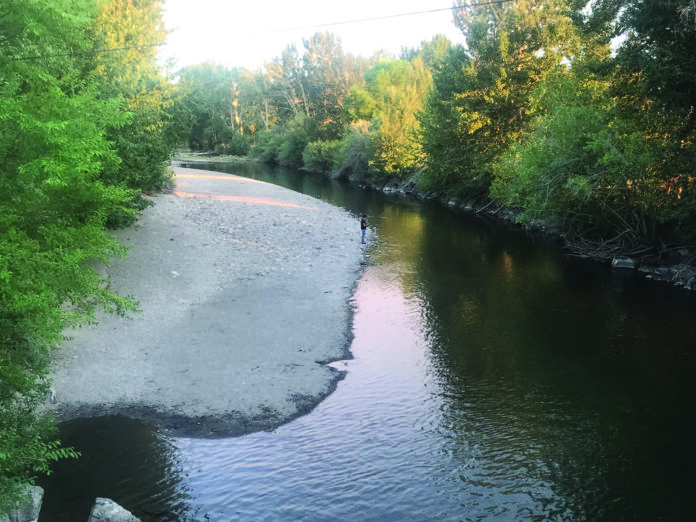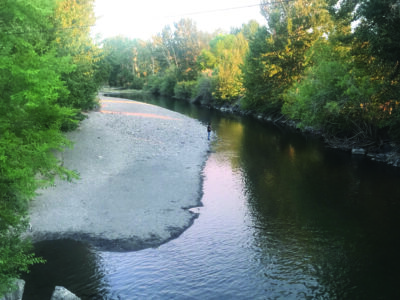
Fish and Game policies take center stage amid summer hunting, fishing activities
By Eric Valentine

Trip to Europe? Cancelled. Music festival plans? Maybe next year. Start of school? Delayed.
As summer ticks along into late summer and early fall, the COVID pandemic has impacted a lot of lifestyle and leisure plans for everyone. But, thanks to plenty of fresh air and the relative ease of social distancing when outside the confines of society, the popular Valley activities of hunting and fishing have become only more high-demand. What follows is a rundown of some important recent happenings in all things hunting and fishing, including current events involving Idaho Fish and Game.
Elk On The Shelf
Starting Thursday, Aug. 13, the Idaho Department of Fish and Game will be selling roughly 465 nonresident elk tags and about 30 nonresident deer tags starting at 10 a.m. on a first-come, first-served basis. The actual number of tags will depend on the number of previously issued tags that get returned. Tags can be bought online, at license and tag vendors, or by phone at 1-800-554-8685.
Most nonresident elk tags sold out earlier this summer, but some elk tags were set aside for outfitters, the department said. Under Idaho Fish and Game rules, the nonresident elk tags revert back to over-the-counter tags for nonresident hunters, or as second tags to resident (and nonresident) hunters, if they are not purchased by Aug. 1. Nonresident deer tags returned by hunters after Aug. 1 are also available as second tags.
More details about how many elk and deer tags, and which types, is listed on the returned tag webpage at idfg.idaho.gov/tag/returns.
Meanwhile, in the Wood River drainage and Magic Valley region, the department is working with local agricultural producers to reduce crop damages caused by big game. As in years past, elk continue to move onto cultivated fields at night, triggering a significant number of requests from landowners for depredation assistance. To reduce crop damage, Fish and Game has issued kill permits to landowners and has authorized depredation hunts on agricultural land.
In an area near Little Camas Reservoir, Fish and Game technicians have begun to haze elk off of agricultural crops using noise-making devices. To date, no sharp shooting has occurred in this area. Fish and Game attempted to implement another managed hunting program on private lands in proximity to the areas at Little Camas where elk depredation is occurring. However, Fish and Game was unable to negotiate access to large tracts of private land, so the use of managed hunts in the Little Camas area will not occur this year.
Sockeye It To ’Em
Fish and Game reports that the first sockeye salmon of 2020—a naturally produced female—returned to the Redfish Lake Creek trap near Stanley on July 31 and a second arrived on Aug. 2. These are among the 412 sockeye that had crossed Lower Granite Dam through Aug. 2, signalling a substantially larger return to Idaho than last year.
This year’s sockeye return appears to be slightly later than usual, and fisheries managers expect more fish will cross Lower Granite, which is the last dam the fish cross before reaching Idaho. Based on historical conversion rates between Lower Granite and the Sawtooth Valley, if no more fish crossed the dam, about 124 to 165 sockeye would return to the valley this year and likely surpass the last two years’ returns.
That’s a big spike from 2019 when only 17 sockeye completed the migration to the Sawtooth Valley, the lowest in more than a decade. This year’s return over the dam is already the highest since 2016, when 816 fish were counted at the dam. Fisheries managers were expecting an uptick in returns this year thanks to relatively cool water temperatures that benefit migrating fish and improvements to the way young sockeye were released into the Sawtooth Valley to migrate to the ocean.
While dam counts are higher this year, the fish still have a long way to go before reaching the Sawtooth Valley, where they will be trapped and transported to the Eagle Hatchery, in Eagle. Based on genetic analysis, some of those fish will be incorporated into the captive broodstock at the hatchery and the remaining fish will be released to Redfish Lake in mid-September to spawn naturally.
Just Can’t Bear It
On Aug. 3 a so-called “food-conditioned” black bear was euthanized in the Wood River Valley after repeatedly getting food from residential garbage containers, birdfeeders and beehives.
“To protect public safety and private property, Fish and Game had to euthanize a juvenile black bear that had become food-conditioned to residential garbage, bird feed, and honey from beehives,” the department explained in a press release on the incident. “Bears are extremely adaptable and can learn very quickly to associate people with food. Food-conditioned bears can rapidly lose their fear of humans, resulting in bears approaching people.”
However, sentiment on social media claims otherwise. Although some posts expressed a palpable anger and words that can’t be repeated here, the running theme was that Fish and Game should tranquilize rather than euthanize. Tranquilization proponents say the bear could then be relocated farther away from residential areas.
According to Fish and Game, repeated efforts across the Western U.S. and Canada have shown that moving food-conditioned bears doesn’t often end as hoped, such as when a relocated bear quickly returns to the same location where it was originally trapped, or it continues to be a nuisance bear in their new location. And, the act of trapping and anesthetizing bears can put both the Fish and Game crew, as well as the bear, at risk.
Reports of a bear getting into residential garbage in the East Fork area had been received by Fish and Game for several weeks before the euthanization. Conservation officers who investigated the reports observed residential garbage containers stored outside of homes and often left at curbside the day prior to pick-up, and bird feeders hanging around homes. A large number of beehives were also observed, and the bear got into several of them, resulting in thousands of dollars of damage.
Residents are strongly encouraged to store all residential garbage containers inside a garage or locked shed. Garbage containers should only be put out the morning of pick-up, not the night before. Unsecured garbage containers can also lead to other wildlife receiving a food reward, such as skunks and raccoons, which are prey to larger predators such as mountain lions.
